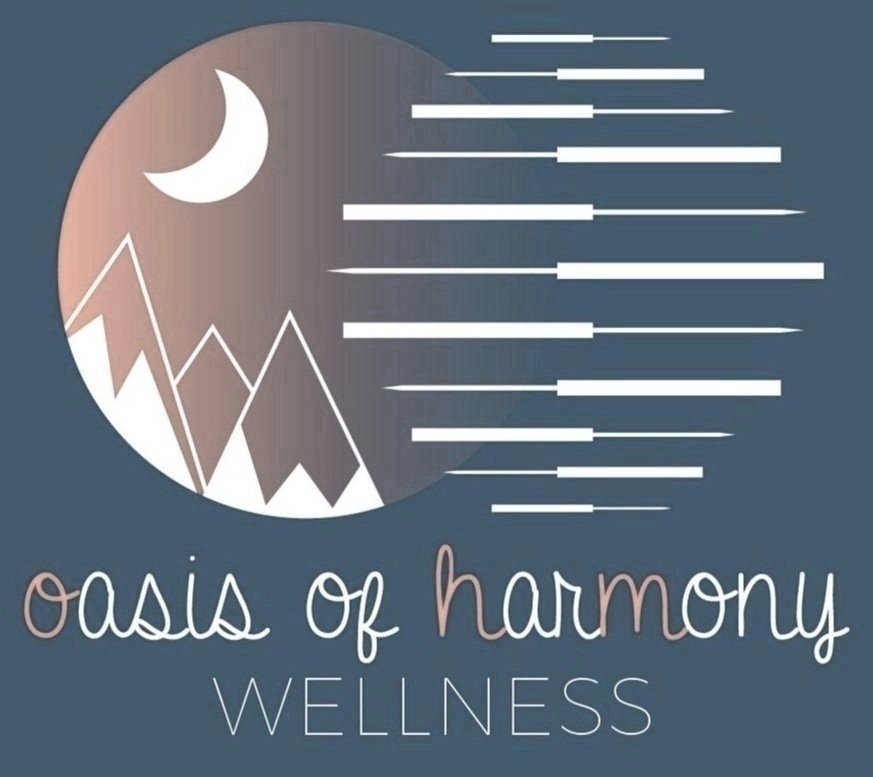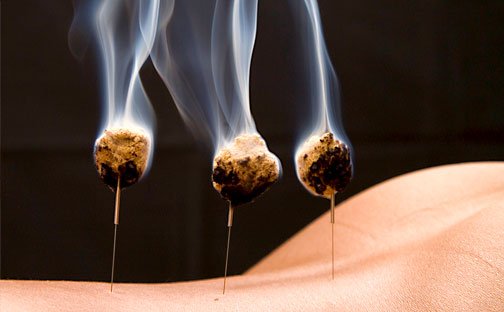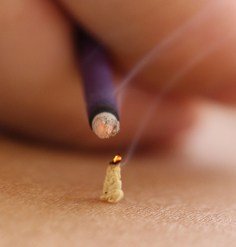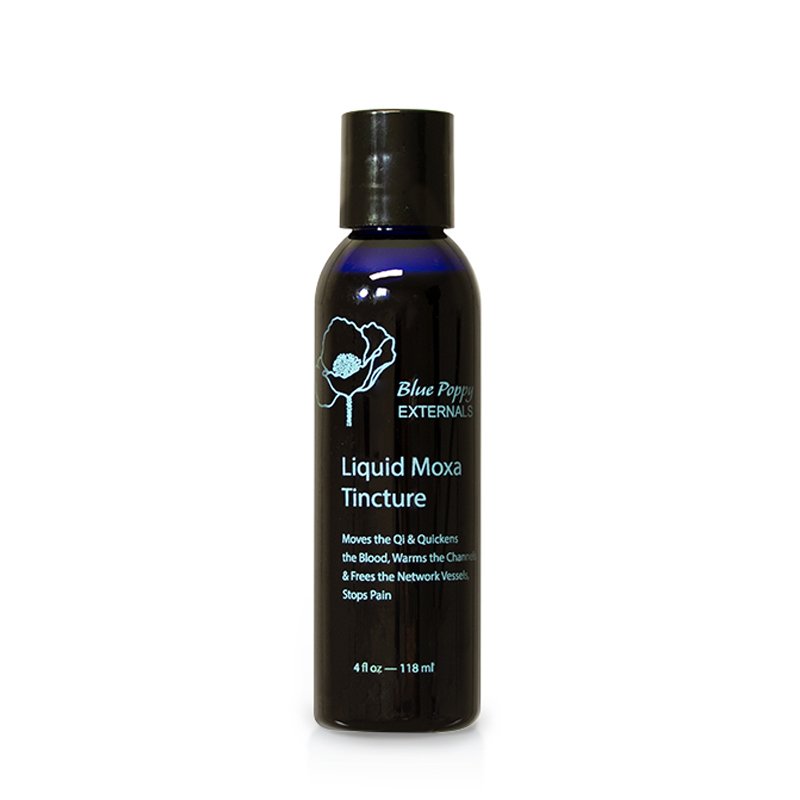Moxa Therapy in Chinese Medicine
Moxibustion is a Traditional Chinese Medicine technique that involves the burning of a dried herb called Mugwort, also known as Moxa, on the body in order to facilitate healing. Moxibustion has been used throughout Asia for thousands of year to smooth the flow of blood, stimulate the flow of qi, warm the area and maintain overall health. Let’s delve a little deeper into what makes moxa so healing and powerful!
Why Does TCM Use Moxibustion?:
Moxibustion provides targeted heat therapy and helps to stimulate the acupuncture points and improve the flow of qi within the body. This increased circulation can help with a variety of health issues from chronic pain to digestive troubles depending on the application. Moxa comes in different forms ranging from moxa ‘wool’ to moxa pressed into a stick but regardless of the form it is always burned to create heat. Depending on the form that the practitioner uses, the moxa is then burned either directly or indirectly on specific acupuncture points on the body until they are warmed. Acupuncturists then burn the moxa fluff or wool directly onto the acupuncture point or on top of the acupuncture needle. It can also be processed further into a cigar shaped stick which can then be used indirectly by hovering over the top of the acupuncture point. From a Western medical point of view, burning moxa stimulates the circulation and the lymphatic flow within the body. The scent of the moxa is very distinct and many people find it to have a therapeutic and relaxing aroma, similar to that of burning sage.
What is Mugwort?:
Mugwort has a long history of use in folk medicine in addition to Chinese medicine. It has been used alongside acupuncture for over 3,000 years. As stated above, moxa is usually made from the dried leafy material of Chinese Mugwort. Mugwort is a member of the daisy family and also related to ragweed. It can be used for the purpose of moxibustion but it can also be used in food and was used in beer before hops were discovered. Mugwort, when being used for moxibustion, is aged and ground up to a fluff. Research has shown that the herb acts as a emmenagogue - which means that it is an agent that increases blood circulation to the pelvic area and uterus as well as stimulates and regulates menstruation. This could explain why it is so amazing in treating breech positioned babies and in treating many gynecological conditions (but more on that below!) Mugwort itself is an invasive weed which grows in many climates and regions including the north east United States. It grows quickly and is relatively inexpensive. It is used because of its acrid, spicy odor which makes it able to travel through all of the meridians on the body and smooth and regulate the qi and blood as well as expel cold. The essential oils in Mugwort have a significant effect as a form of aromatherapy or medicinal incense as well.
What Can Moxa Treat?:
Moxibustion can treat a variety of different issues ranging from pain and digestive troubles to gynecological problems. It is probably best known for turning a baby in breech position in pregnancy! An analysis of studies published for 1954-2007 in China showed that up to 364 different kinds of diseases can be treated with moxibustion. Moxa can also deepen the effect of acupuncture treatments to strengthen the body and move the stuck energy. the following are some specific conditions and symptoms that moxa has been known to help:
Breech Baby - As stated above, moxibustion is perhaps best known for being an alternative way to help with a breech position in pregnancy. This happens when a baby is in a bottom down position during birth which makes the process much more difficult and can be unsafe for both mama and baby. A lot of research has been done on moxibustion may reduce the need for certain medical procedures typically used in Western medicine to correct the breech position - many if not all of which, can be extremely uncomfortable and painful. The treatment is typically done around 34 weeks with indirect moxa around an acupuncture point on the Bladder meridian. Fifty percent of breech fetuses at 34 weeks will turn by themselves to head down by 38 weeks. Therefore, to be considered effective, a technique for turning breech must turn the baby and keep it turned more than 50% of the time. A landmark study in the Journal of American Medical Association in 1998 found that up to 75% of women suffering from breech presentation before childbirth had fetuses rotate to a normal position after receiving moxibustion at the acupuncture point on the Bladder meridian.
Western Medical Perspective - Moxa is understood within the Western medical framework to be a natural diuretic as well as a moderate stimulant. It is also an emmenagogue which means that it can trigger an increase in blood flow to the pelvic area - especially the uterus. This is why it is often used to treat gynecological and obstetrics issues. Heating of the moxa causes stimulation to the nerves which releases endorphins to block pain and relieve it instantly. Medical experiments have shown that moxibustion exerts much wider and stronger effects on overall biochemical changes in the body than acupuncture alone. Moxibustion increases the production of white blood cells. The white blood cell count begins to increase immediately after direct moxa treatments. Moxa improves the overall blood and lymph circulation and the capacity to produce antibodies which helps to strengthen immunity. People who suffer from constant circulation or cold feeling in the hands and feet can greatly benefit from moxibustion.
Other symptoms and conditions that moxa has been known to help include:
- Arthritis
- Asthma Symptoms
- Back Pain
- Breech Baby Positioning
- Cancer Pain and Side Effects from Treatment
- Chronic Pain
- Crohn’s Disease
- Cold and Flu Prevention
- Cough
- Depression and Low Mood
- Digestive Problems
- Eczema
- Fatigue
- Gynecological Issues
- Headaches
- Hot Flashes
- Immune Strengthening
- Infertility
- Irritable Bowel Syndrome
- Joint Paint
- Menstrual Cramps
- Migraines
- Muscle Stiffness
- Nausea and Vomiting
- Respiratory Issues
- Sports Injury
- Tendonitis
- Ulcerative Colitis
- Ulcers
Types & Application of Moxa:
Moxa comes in many shapes and forms and the type that your acupuncturist chooses is based on what area of the body they are treating, what their treatment goals are or their personal preference or style.
- Direct Moxa: Pure, wool-like loose moxa can be shaped into a cone and placed on specific acupuncture points. It is usually burned about ⅔ of the way down or when the patient reports feeling the warmth before being removed. It should have a nice warming effect without getting too hot.
- Needle Moxa: Pure moxa will be rolled into a ball and placed on the end of an acupuncture needle and burned. The heat from the moxa warms the surface of the skin and also transfers through the needle deeper into an acupuncture point. This is one of my favorite methods!
- Moxa Stick: Loose moxa can be rolled and formed into something that resembles a cigar. One of the ends is lit and it is then burned about an inch or so over a large area or near a specific acupuncture point. Moxa sticks come in a few different sizes and forms. These are typically what practitioners will send home with you if you have prescribed moxa treatments from your acupuncturist.
- Moxa Thread: Tiny threads of loose moxa can be rolled and used on specific acupuncture points or places on the body which an acupuncture needle cannot be placed, such as a tendon or bony surface. Practitioners will typically use an ointment or cream to help the moxa thread stick to the skin and also to separate the thread from the skin. The thread is lit with an incense stick. Instead of just warming the area, the heat from the moxa thread is able to penetrate directly into the area.
- Moxa Liquid: Some companies have made moxa into a liquid which can be used over an area of the body and then a heat lamp is placed over top to get the warming effect. Some practitioners choose this method if they cannot burn moxa in their office.
- Moxa Box or Can: Moxa can also be used in a special box or can. This is filled with loose moxa that is then lit with an incense stick. Once lit, it slowly smolders in the container releasing the heat. The container is typically wrapped in a towel to control the amount of the heat that the patient feels. This is great for treating large areas of the body such as the low back or the stomach/pelvic regions.
- Indirect Moxa: Another form of indirect moxa is to use a slice of ginger, garlic or salt as a barrier to the loose moxa cone. This is typically used on areas of the body such as the umbilicus, on the head or on the face.
Moxa can also be made into chimneys that can be stuck directly to the skin and burned, medicinal incense, topical creams or lotions and used as an essential oil which all have significant beneficial impacts. Practitioners often do both acupuncture and moxibustion in the same treatment when appropriate to the diagnosis and treatment strategy. When used together the therapies increase each other’s effectiveness.
What Can I Expect During Moxibustion Treatment?:
It is not uncommon for patients receiving moxibustion to report a sudden flooding of warmth that quickly radiates along specific pathways. This usually corresponds to the channel that is being treated and is a good thing as it indicates to the practitioner that the qi has arrived and the blood and qi are circulating freely within the channel. Moxibustion do es product a lot of smoke when burned. This is typically not a big problem at Oasis of Harmony Wellness as we have a good ventilation system. However, the lingering odor produced from burning mugwort can stay with the skin and clothing after treatment.
Are There Any Risks?:
Although moxibustion has been used safely in Traditional Chinese Medicine for centuries, it is not for everyone. This is why it is extremely important to see a licensed acupuncturist for treatment. Moxa specifically should not be used for anyone who has too much heat within the body, patients who have neuropathy, diabetes or high blood pressure. It can also be dangerous to use moxibustion if it is too early in pregnancy especially on the meridian that is known to turn a breech positioned baby. Please see an experienced and licensed acupuncturist when seeking acupuncture or moxibustion therapy.











